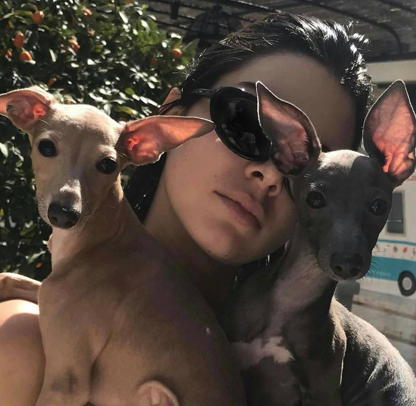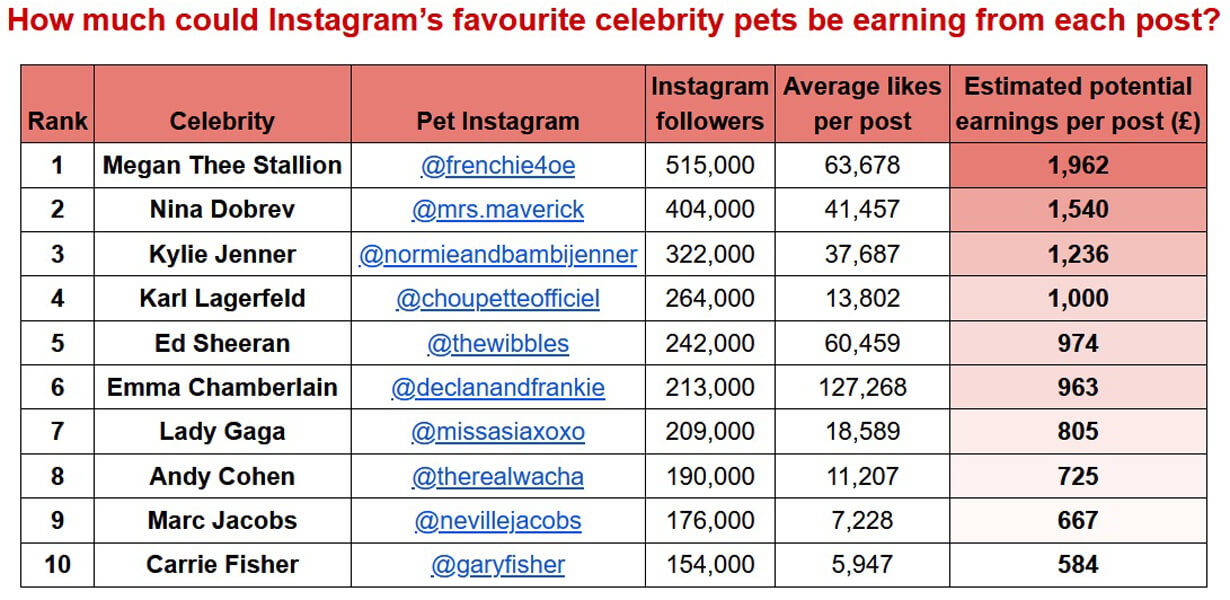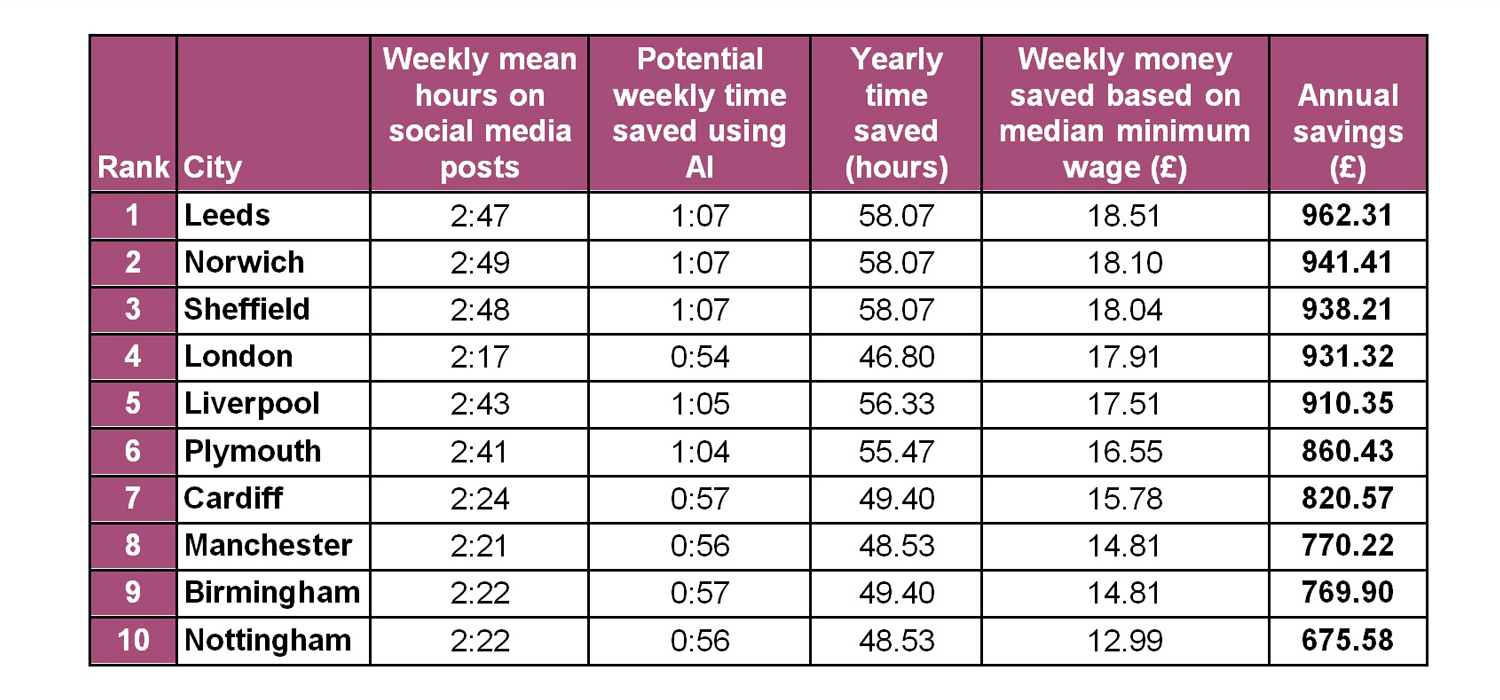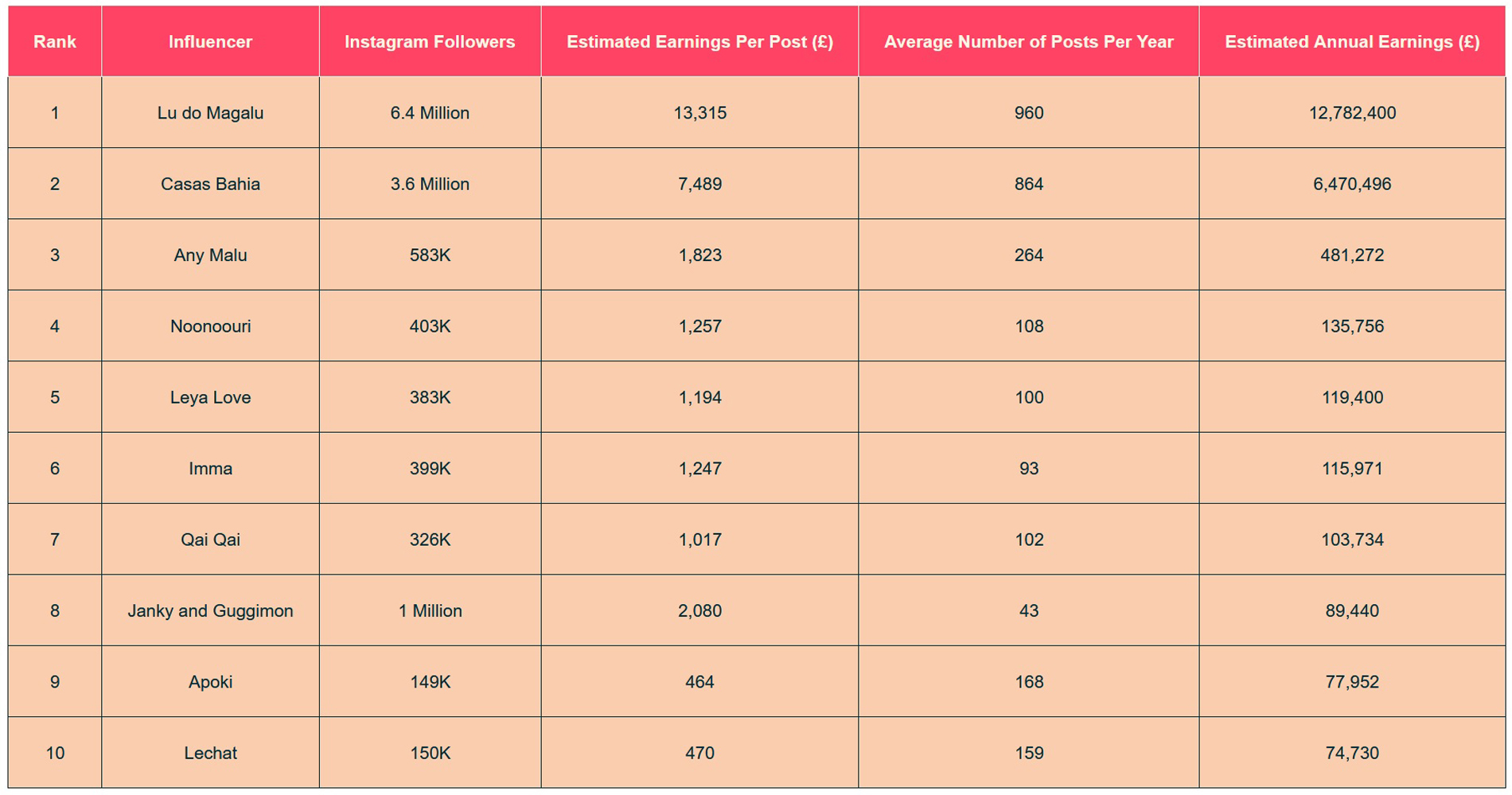
Social media followings are a lucrative business, with global influencer marketing estimated to reach a record of 24 billion U.S. dollars in 2024.
And there could be non-human influencers taking a slice of that pie: celebrity pets with their very own Instagram accounts.
RANT Casino calculated how much Instagram's most popular celebrity pets could be making from sponsored posts alone.
Megan Thee Stallion | @frenchie4oe - £1,962 per post

First in the rankings is Megan Thee Stallion’s French Bulldog 4oe, known as @frenchie4oe on Instagram. 4oe is such a star that he has even appeared on The Tonight Show alongside his mom. He is one of many adorable pups belonging to the popular American rapper, including fellow frenchies Dos and Oneita, however he is the only one with his own Instagram account.
With over half a million followers, and upwards of 60,000 likes on each post on average, 4oe could be earning almost £2,000 on a single sponsored post.
Nina Dobrev | @mrs.maverick - £1,540 per post

Next up is Maverick: a black and white pup belonging to Canadian actress and star of The Vampire Diaries, Nina Dobrev. The Border collie/Australian shepherd mix was adopted by Dobrev as a puppy in 2017, when she also received her very own Instagram account.
Maverick could be earning £1,540 with a single sponsored post, thanks to 404,000 followers and over 40,000 likes on average.
Kylie Jenner | @normieandbambijenner - £1,236 per post

Third in the rankings is a joint Instagram account for two Italian Greyhounds belonging to Kylie Jenner: Norman and Bambi. The two pups are part of a whole crew of Kardashian-Jenner animals, with Kylie alone having over 10.
Known as @normieandbambijenner on Instagram, the pair have 322,000 followers and could earn as much as £1,236 per post.
Karl Lagerfeld | @choupetteofficiel - £1,000 per post

Perhaps one of the most iconic celebrity pets of all time, Choupette is the white Birman cat who belonged to the late fashion legend, Karl Lagerfeld.
The legendary German designer loved Choupette so much that there were even tributes to the feline friend at the Met Gala that honoured Lagerfeld in 2019, including cat costumes from Doja Cat and Jared Leto.
Choupette’s own Instagram account is still going strong, and with 264,000 followers she could be earning £1,000 for every post.
Ed Sheeran | @thewibbles - £974 per post

Next in the rankings are Calippo and Dorita: two feline friends belonging to singer Ed Sheeran.
The Instagram account shared by the pair has 242,000 followers, and with an average 60,459 likes on recent pics, they could be raking in £974 for every post.
Please find the full dataset here.













































